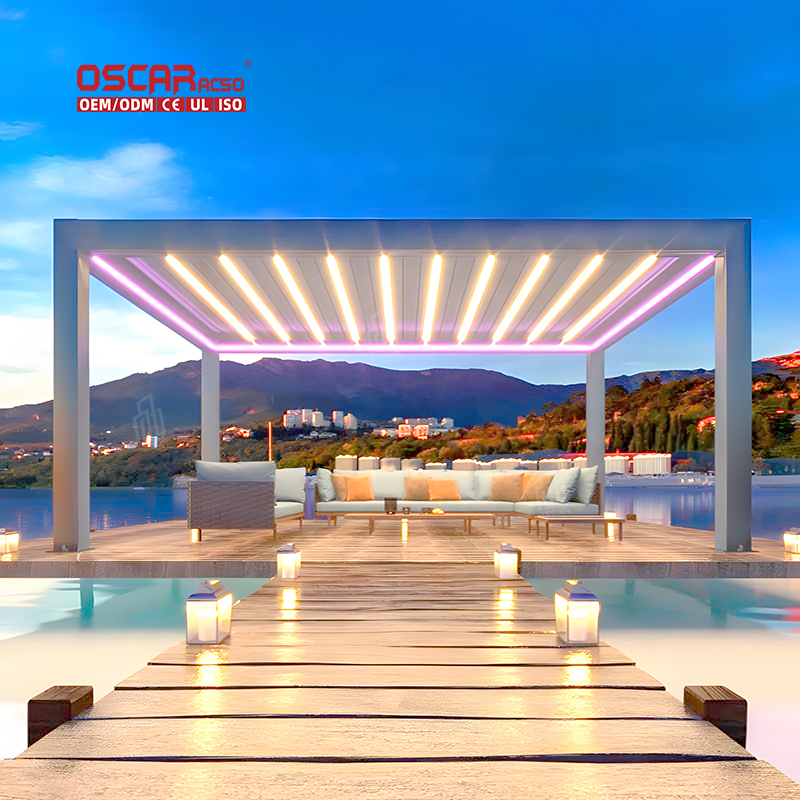Pergola Lighting Mastery, Calculate String Lights Like a Pro
Ever dreamt of transforming your ordinary pergola into a magical evening retreat? ✨ A key question arises: how many st...
Ever dreamt of transforming your ordinary pergola into a magical evening retreat? ✨ A key question arises: how many string lights do you actually need? This isn’t just about aesthetics; it’s about crafting a space that’s both enchanting and functional. Let’s illuminate the path to your perfect setup.
.jpg)
🔍 Key Factors Influencing Quantity
Figuring out the number of string lights isn’t a one-answer-fits-all solution. It depends on several crucial factors:
- •
Pergola Size and Layout: The overall dimensions are the primary driver. A larger pergola, like a 16’x20’ structure, will naturally require more lighting than a compact 8’x8’ one to avoid a sparse look.
- •
Desired Bulb Spacing: This is your main lever for controlling ambiance! The distance between each bulb directly determines the total length needed.
- •
Closer spacing(e.g., 12 inches): Creates a denser, brighter canopy of light, ideal for areas used for dining or reading.
- •
Wider spacing(e.g., 18-24 inches): Offers a more open, subtle glow, perfect for accent lighting and a relaxed vibe.
- •
- •
Lighting Pattern and Style: Your chosen design dramatically affects the total length. A simple straight-run pattern along beams uses less than an intricate zig-zag or criss-cross pattern that covers more area.
- •
Bulb Size and Style: Large globe bulbs often look best with wider spacing, while mini lights or fairy lights can be clustered closer together for a twinkling effect.
📐 The Essential Calculation Formula
Ready for some simple math? Let’s demystify the process with a basic formula:
Total Length of Lights Needed = (Pergola Length to Cover / Desired Bulb Spacing) * Pattern Factor
- 1.
Measure: Determine the total linear feet you plan to cover (e.g., the length of all beams for a criss-cross design).
- 2.
Choose Spacing: Select your desired bulb spacing (e.g., 18 inches).
- 3.
Calculate: Divide the total length by the spacing (converted to feet). Then, multiply by a factor for your pattern (e.g., 1.5 for a simple zig-zag, 2+ for a dense criss-cross).
Example: For a 12-foot beam with an 18-inch (1.5 ft) spacing in a single run.
- •
(12 ft / 1.5 ft) = 8 bulbs needed for that beam.
Remember to always add extra length for connecting strands, draping, and securing ends. A good rule is to add 10-15% to your final calculated length.
.jpg)
💡 Popular Lighting Types & Their Impact
The style of lights you choose influences both the quantity and the overall ambiance.
- •
Classic String Lights (G40 Bulbs): These are the timeless choice. Their larger size often calls for wider spacing (around 18-24 inches). A 100-foot strand with 50 bulbs is a common offering.

- •
Fairy Lights / Mini Lights: Delicate and whimsical, these allow for very close spacing and are perfect for wrapping posts or creating dense light curtains. You’ll need more feet of lighting to cover the same area compared to larger bulbs.
- •
Globe Lights: Popular for their soft, diffuse glow. Sizes vary, but spacing is typically similar to classic string lights. Shatterproof and IP54-rated models are ideal for longevity outdoors.
- •
Net Lights: Fantastic for quickly covering a flat or slatted pergola roof section. They come in predetermined sizes (e.g., 6’x8′), which simplifies calculation but offers less layout flexibility.
Pro Tip: LED lights are non-negotiable for outdoor use. They are energy-efficient, long-lasting, and remain cool to the touch, enhancing safety.
🌦️ Adjusting for Climate and Function
Your local environment and how you use the space are vital considerations.
- •
Entertaining & Dining Areas: If you host frequently, opt for brighter output and denser spacing to ensure ample light for conversation and meals.
- •
Cozy Relaxation Nooks: For a tranquil vibe, softer lighting with wider spacing creates a perfect, intimate glow.
- •
Windy Regions: Ensure your lights are securely fastened with hooks or zip ties every few feet to prevent tangling and damage.

- •
All-Weather Durability: Always choose lights with a high IP Rating (e.g., IP54) which signifies protection against dust and water splashes, ensuring they withstand the elements.
🛠️ Installation Wisdom & Pro Tips
A flawless installation ensures your lighting looks professional and lasts for seasons.
- •
Plan Your Layout First: Sketch a diagram or use string to mock up your design on the pergola beforehanging anything. This prevents mid-installation surprises and wasted effort.
- •
Choose the Right Hardware: Use outdoor-rated screw hooks or stainless steel clips. Avoid stapling cords directly, as this can damage weatherproofing.
- •
Layer Your Lighting: Don’t rely on string lights alone. Combine them with lanterns, path lights, or uplighting for depth, dimension, and functionality.
- •
Smart Control: Invest in a smart plug or dimmer switch. This allows you to easily adjust brightness for any occasion and can help save energy.
A common mistake? Underestimating the need for a dedicated outdoor power source or using indoor-rated extension cords, which is a serious safety hazard.

💎 Final Thought: Beyond the Numbers
While calculating the number of lights is a technical starting point, the true magic lies in the ambiance you create. Your pergola should be a reflection of your personal style—a place where memories are made under a soft, glowing sky. Don’t be afraid to experiment with patterns and densities until it feels just right. The perfect lighting scheme is the one that makes you never want to go back indoors. 🎉

